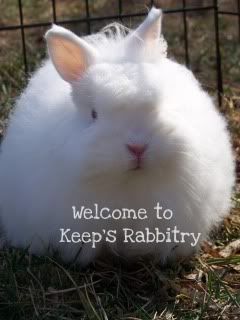To start with, you have 2 genes, we'll call them M and m. In genetics, the capitalized M is always dominant, little m is recessive. This basically means big M overshadows little m. It takes TWO recessive genes (mm) for that trait to be expressed, where the dominant M is almost like a bully- it only takes one for him to make the little m run and hide.
Got it?
Every rabbit has 2 genes and each parent "gives" one to each offspring. If you have a buck that is MM and a doe that is mm, if they have 4 offspring, ALL will be Mm. That is, carriers for what mama is, but they'll look like daddy. This is because the buck can only give M and the doe can only give m.
If you wanted to do a linebreeding with siblings, you'd know genetically they were Mm. In this case, if they have 4 babies, you'd get (*statistically speaking*) 1 MM, 2 Mm and 1 mm. So the first three look like their parents and the last one is a throw back to what grandmama looked like. Figuring this out can take a drawing, called a Punnit Square.
 I hope I haven't lost anyone!
I hope I haven't lost anyone!Now, we've had a small background in genetics, let's move on to actual rabbit stuff. We'll focus only on "A" today.
Rabbits have a string of letters to stand for their genetics. A B C D E.
A stands for Agouti. It's dominant over the other "a" colors, which are "at" for tan and "a" for self.
Agouti can mask tan (Aat) or mask self (Aa), or you could get a completely dominant Agouti (AA).
The at gene is what is used to produce tan, or otters and martens. (However, it requires input from other genes to decide what exactly it is- more in a later post, as I am able lol).
Basically, while "at" is recessive to Agouti, it's still dominant over "a" (self). So in order of potency, you get A-at-a.
If you have a self rabbit, you *KNOW* it is aa. If it had a tan (at) or agouti (A) gene, then you wouldn't be looking at a self :).
So now you know if you're looking at a chestnut rabbit, you know it's phenotype (physical expression of a gene) is A_ (remember, it could be hiding at or a, or have another A gene). You'd have to do test breedings to figure out it's genotype, or what it's actual genetic makeup is!).
Ok, that's about it from me today. I hope this entry makes sense, if not, please let me know, I'll be happy to try to clarify! We'll try to tackle "B" another entry! :)
-Kristen
Keep's Rabbitry


No comments:
Post a Comment